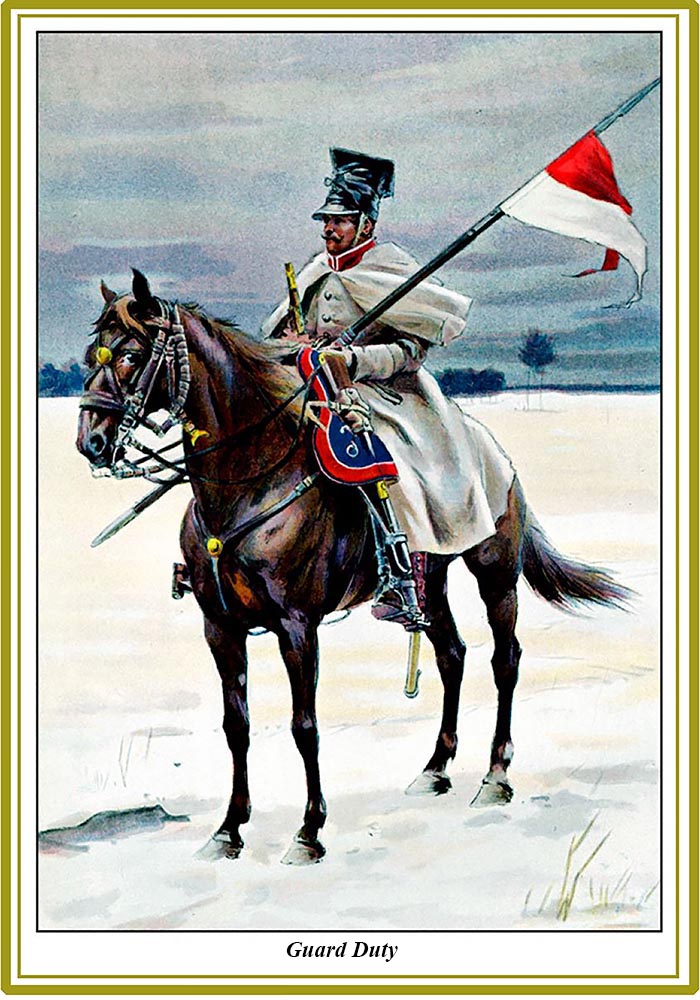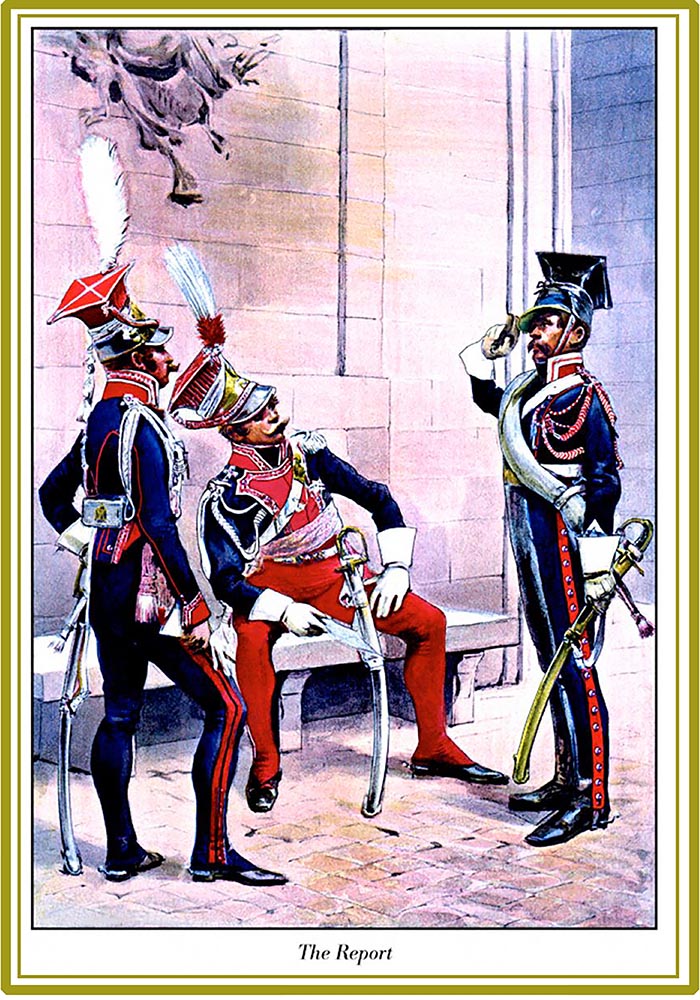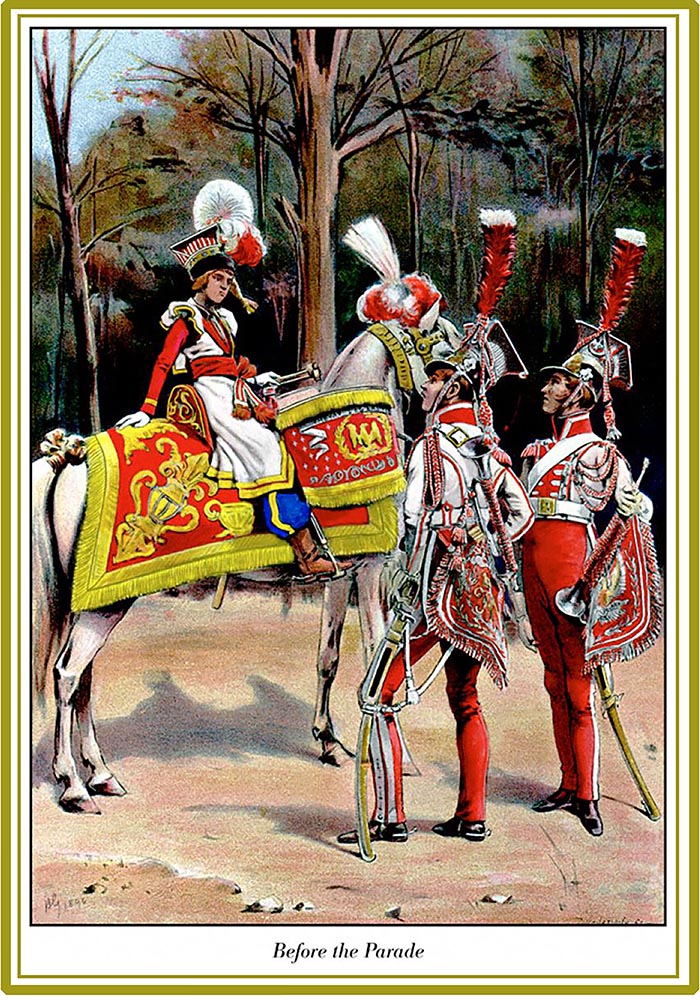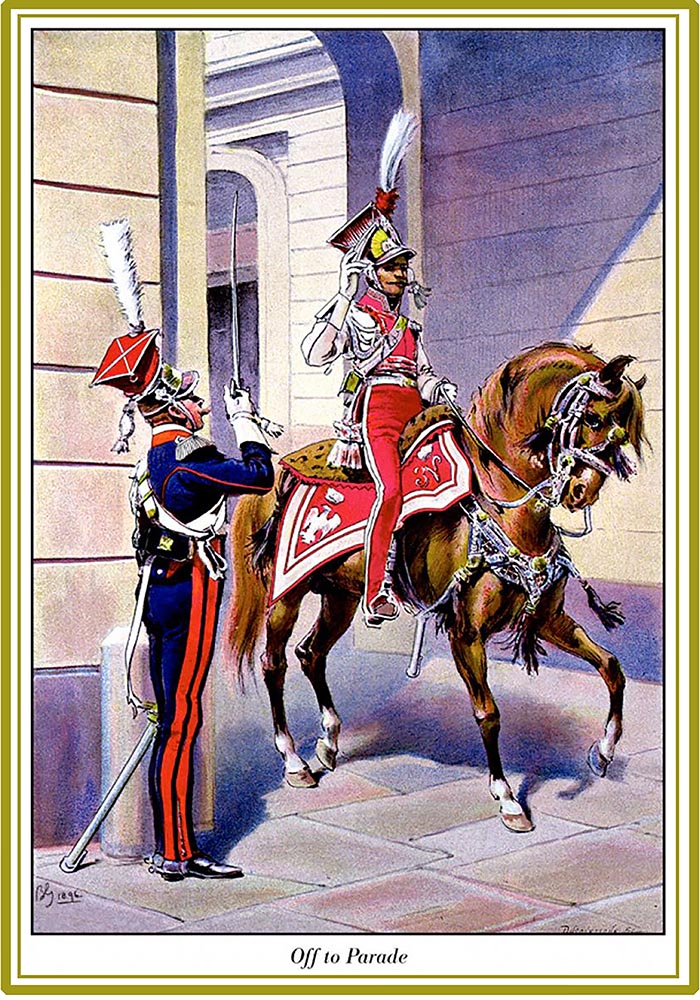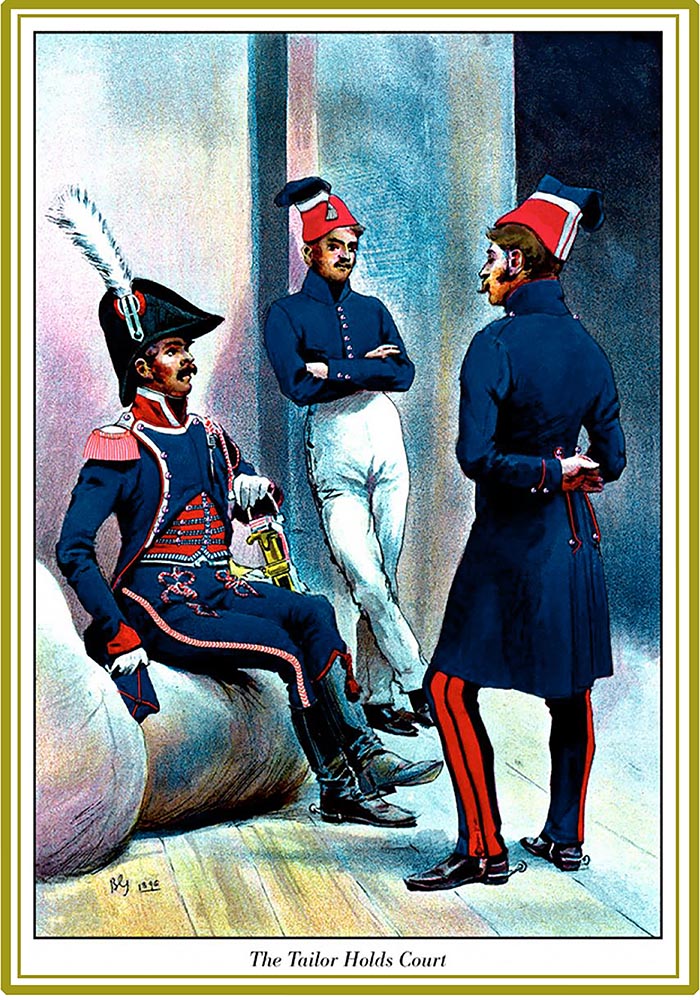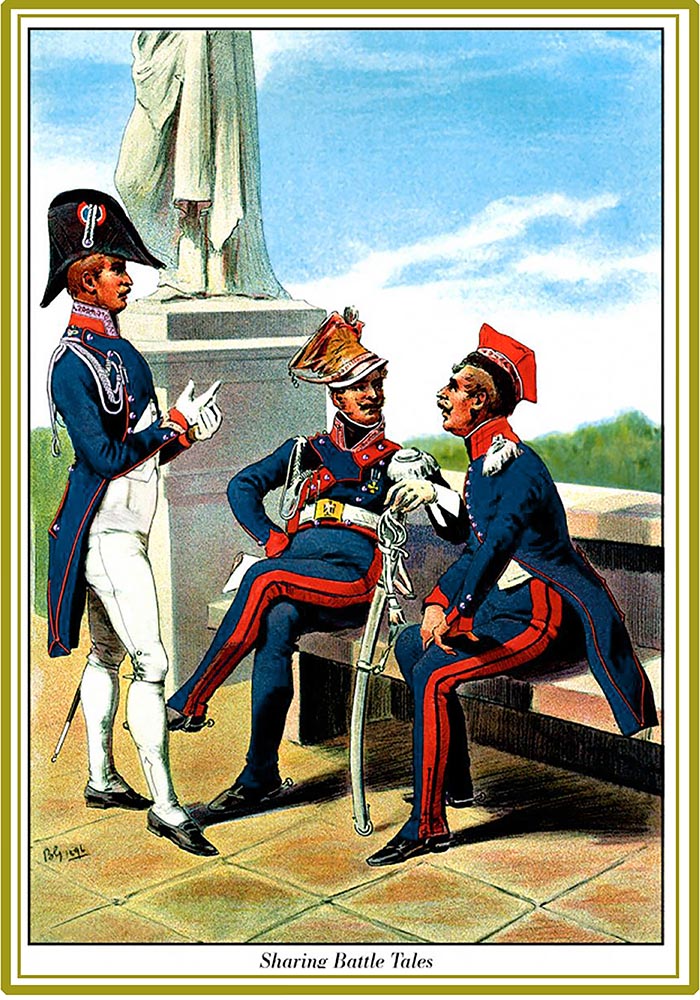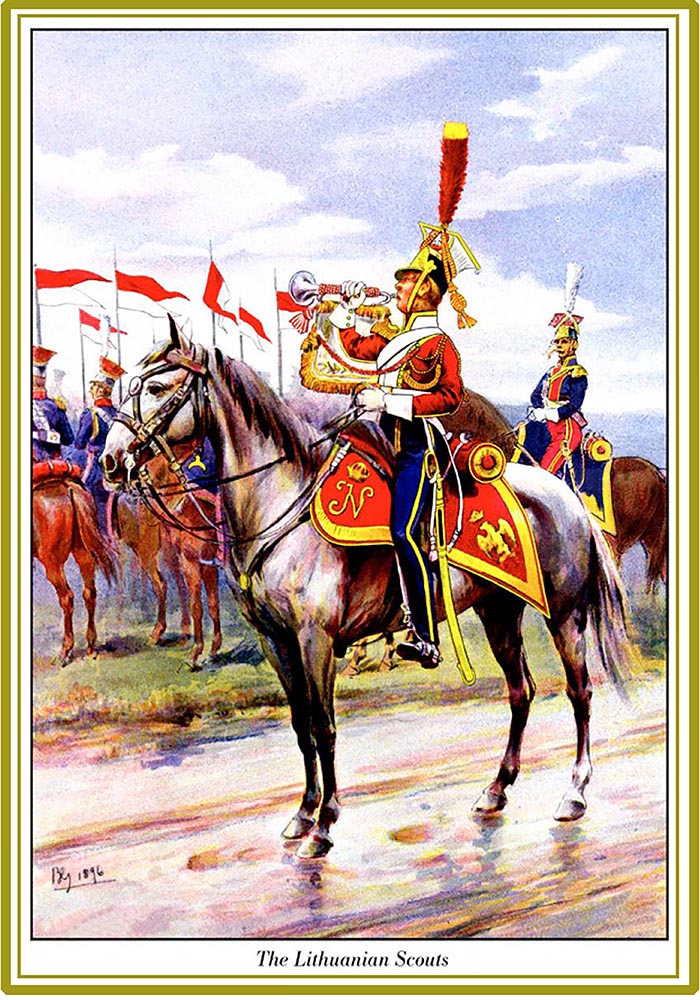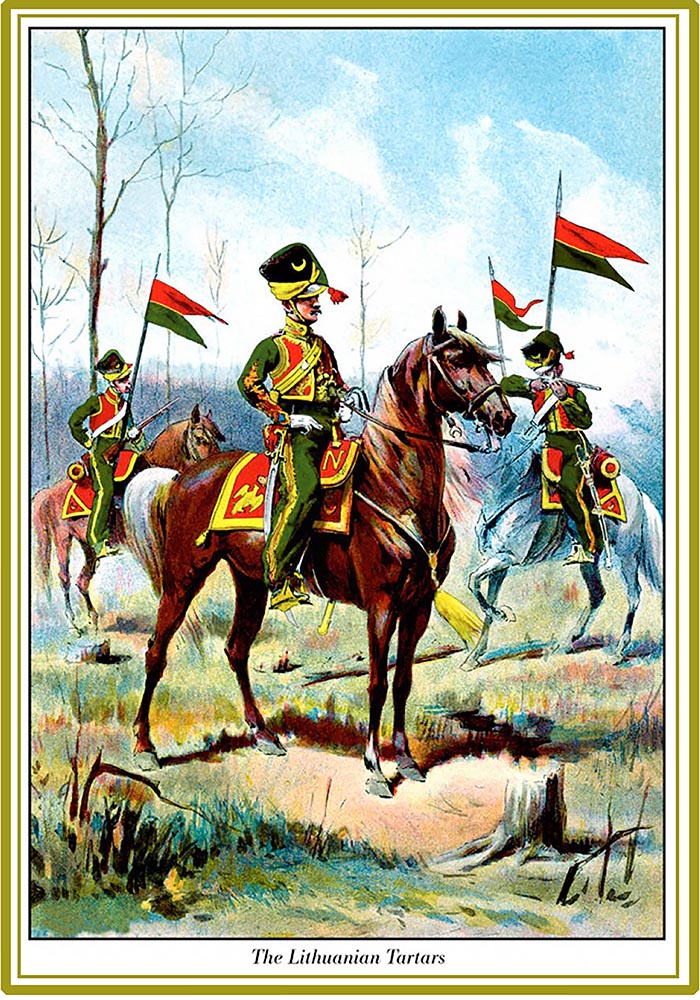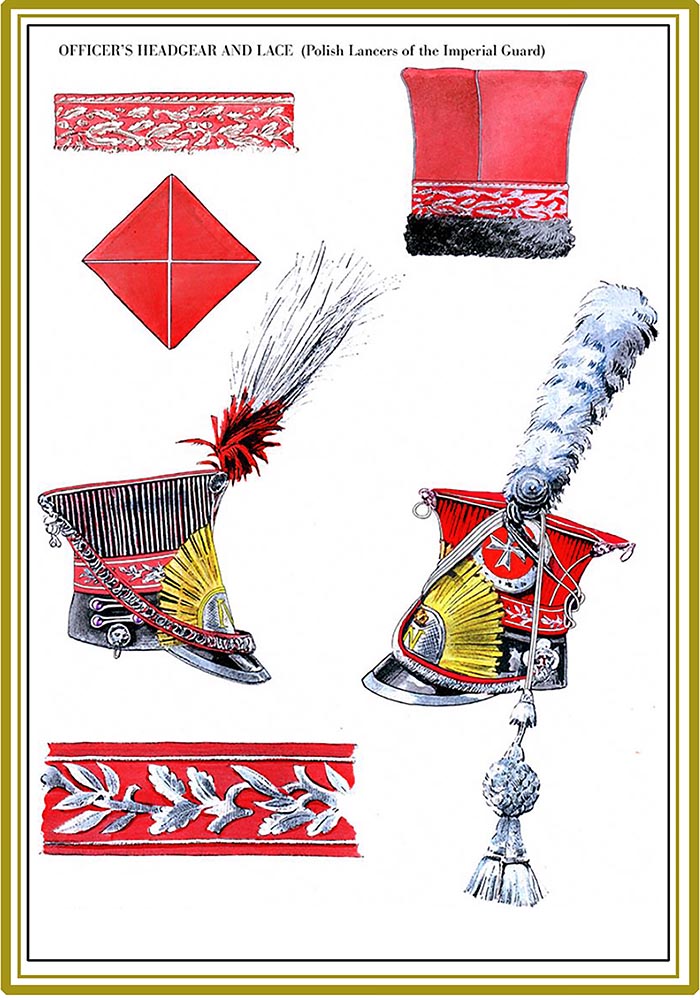UNIFORMS IN DETAIL
PAGE 17
POLISH LANCERS OF THE IMPERIAL GUARD
1808-1812
By Bronislaw Gembarzewski
Gembarzewski studied at the St. Petersburg Imperial Academy of. Art during the 19th Century and was an accomplished painter. He is best known for his studies on the military uniform of the Polish fighting men from the 9th Century through the January Uprising of 1863. He was one of the organizers of the Museum of the Polish. Army in Warsaw and its first director. His work is considered legendary in Poland. Most of his original watercolors were lost or destroyed during the Warsaw uprising of 1944 and the destruction of the city by the Germans following the uprising. During the postwar period the government published several volumes of his works mostly from microfiche. His remaining watercolors are mostly in possession of the Polish Army :Museum.
These prints were scanned from the original prints in the Le Sabretache Journal s that were printed in 1895. Each print has been carefully restored to all its original color and vibrancy and enlarged approximately 50 %.
The notes to this series of prints were written by Dr. David Stefancic of St. Mary's College in Notre Dame, Indiana, USA. Dr. Stefancic is one of the most knowledgeable and dedicated historians of the Polish military in the United States today.
Polish Lancer in Greatcoat.
The profile of the Polish Lancer was quite unique. It was said that Cossacks avoided such images. As a result, French Officers often borrowed a czapka and greatcoat when they had to ride post duty to avoid any problems. Napoleon, himself, donned a lancer uniform in 1812 when he reconnoitered the Niemen River on June 23.
The Polish greatcoat was a taupe or tan color as compared to the Dutch Lancers tliat wore a medium blue. Both coats had red collars and cape lining.
He is armed with the standard lance as well as pistol and carbine. The Poles attached their carbine to the saddle rather than attaching it to a carbine belt which hung down to the waist. The traditional lancer cap (czapka) is covered in black oilskin to protect the cap from the elements. Officers occasionally used a tan oilskin in place of black
Sergeant and Officers
A lancer sergeant (Marechal-de-Logis) salutes before delivering a message to two officers. The sergeant is giving the traditional two-finger salute (For God and Country). He is wearing the uniform of 1808 with the red and white striped aiguillettes. He is also wearing his greatcoat rolled up and over his shoulder. A rolled greatcoat was easier to carry and provided extra protection against sabre cuts. He is wearing the typical riding breeches with leather on the inseam. His gloves cover his sergeant's stripes.
The standing officer is most likely a lieutenant (porucznik). He has his officer's waist sash and silver officer's pattern lace around his collar, cuffs and turn backs. The seated officer is most likely a Squadron leader. His red trousers and more ornate czapka and plume distinguish him.
All three men are wearing the traditional short jacket known as a kurtka which had short tails, rather than the French long tailed jackets.
Kettle Drummer and Trumpeters.
The trumpeters are wearing the traditional czapka in white with red piping. The dress trumpeter uniform was a white kurtka with red turn backs. The trousers were red with a white and red stripe down the outside of the leg. The field uniform was less ornate. The Maltese cross over the red and white cockade indicates a Polish unit in the service of France. The kettle drummer wears a traditional Polish nobleman's costume. The coat is knee length with a jacket worn underneath. His trousers are also designed on those of noblemen. He is wearing a Konfederatka cap which has a fur band with jewels above the band. On the banner of the drum is the emblem of the Chevau-Legers Polonais.
Officer & Lancer
The mounted officer is dressed in the red and white parade uniform. The Red and 'White was the full dress uniform. The uniform is accented in silver piping and braid. The officer's mount is also decked out in elaborate dress halter and reins in the oriental style.The lancer on guard duty is wearing a standard uniform.
Tailor & Troopers in Undress
The trooper seated is the master tailor for the Chevau-Legers Polonaise. He wears a standard style French coat with Hungarian style trousers and boots. The tailor alone wore the unusual red and white piping on his trousers and blue and white lace on his red waistcoat. He also has the unique pattern of alternating red and white on his epaulettes. Since he does not wear the Maltese cross over his cockade, he is most likely a French soldier assigned to the Polish Lancer Regiment. The unit tailor was very in1portant. It was his job to make sure that uniforms were kept up to regulations and necessary repairs were made. The other two troopers are wearing common stable dress. One is wearing a stable coat while the other a stable jacket. Both are wearing fatigue hats (bonnet de police).
Officers in Dress and Undress
Three variations of officer dress are shown in this plate.The standing officer is wearing levee dress. The collar braid, buttons and aiguillettes were in silver or white. The bicorn would be used for social events. The middle officer is wearing a standard officer's uniform. The cross belt is unique and is most likely made of Moroccan leather. His lapels are turned back which was done on service or campaign, which could explain why, his czapka is covered in oilskin. Oilskin was used to protect the piping and braid on the elaborate and expensive czapka from the elements. The officer is wearing a medal, which could be a French Cross of Valour or the Polish Virtuti Militari. The third officer is wearing a simple habit coat with a waistcoat underneath . On his head is a Konfederatka cap.
Trumpeter & Lancers
The 3rd Light Horse (Lithuanian) was formed in 1812 after the inv•asion of Russia. They were in training when they were caught by Russian cavalry and almost wiped out. In 1813, they were assigned to the 1st Lancer Regiment (Polish). The plate shows a trumpeter, officer and lancers in the background. The uniform design and colour is a cross between the Polish and Dutch lancers uniforms. What distinguished them from their Polish counterparts was the emphasis on gold braid and details
Officer & Troopers
Descendants of the Mongol invaders of the 13th century, the Lithuanian Tartars were formed in 1812. Their purpose was to be used as scouts and skirmishers. They we1•e similar to the Mamelukes in that they were an Islamic unit in service to France. The headdress is an astrakhan covered shako with a yellow cloth turban and green bag. They began to wear a colpack in 1813. Islamic influence can be seen in the wearing of a crescent moon badge on the headdress. Some prints show one star above the crescent and two below. The uniform was a red waistcoat worn over a green shirt with green trousers. The officer in the foreground is distinguished from his troopers by the gold braid on his uniform. The sabres used were of a Mameluke/Polish design.
The Trumpeter wore a robin egg blue uniform instead of the standard green.
Officers' Headdresses
A close up of the iconic Polish Czapka in its various forms as worn by officers. At the top is the undress cap known as a "Konfederatka".

